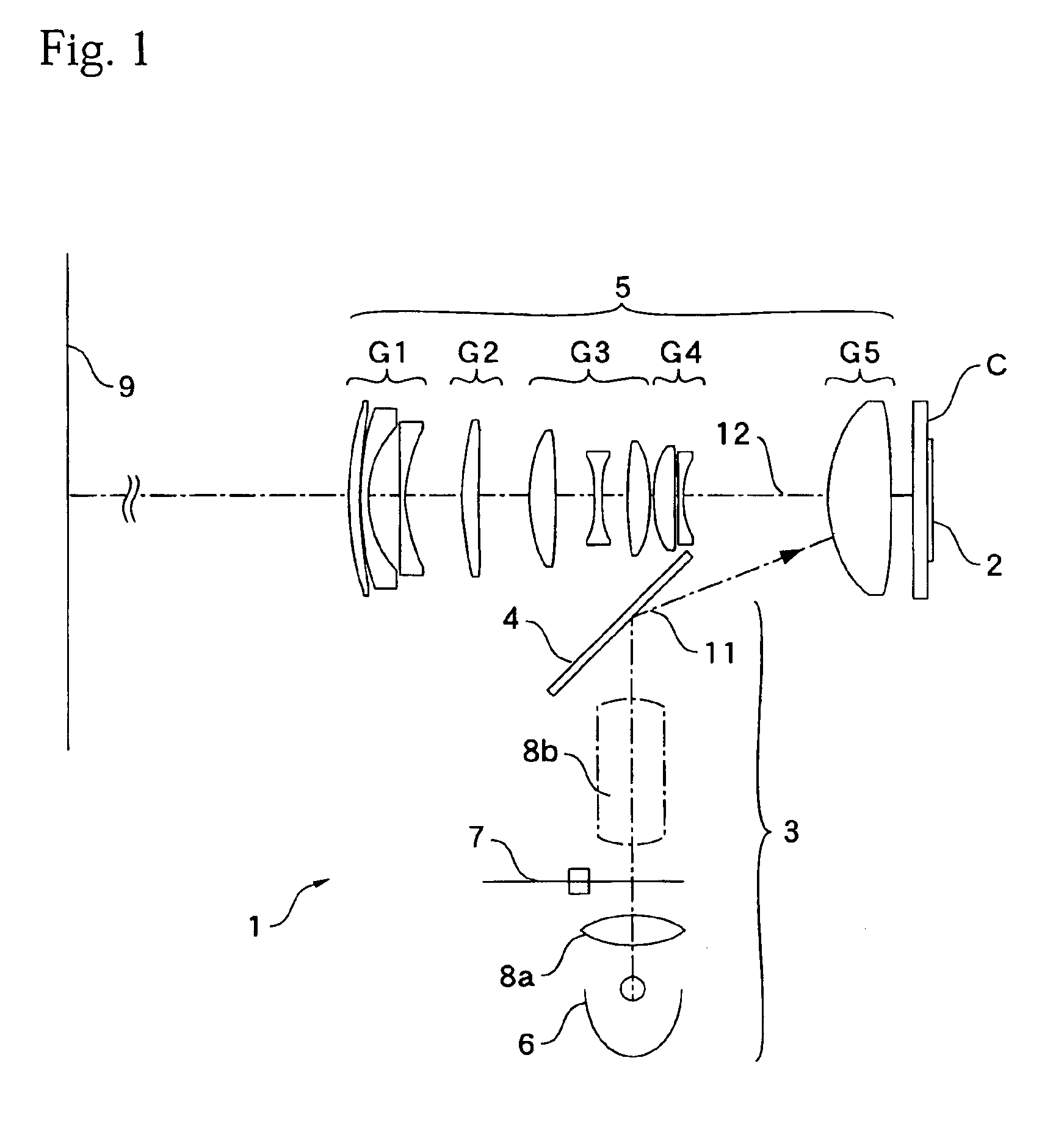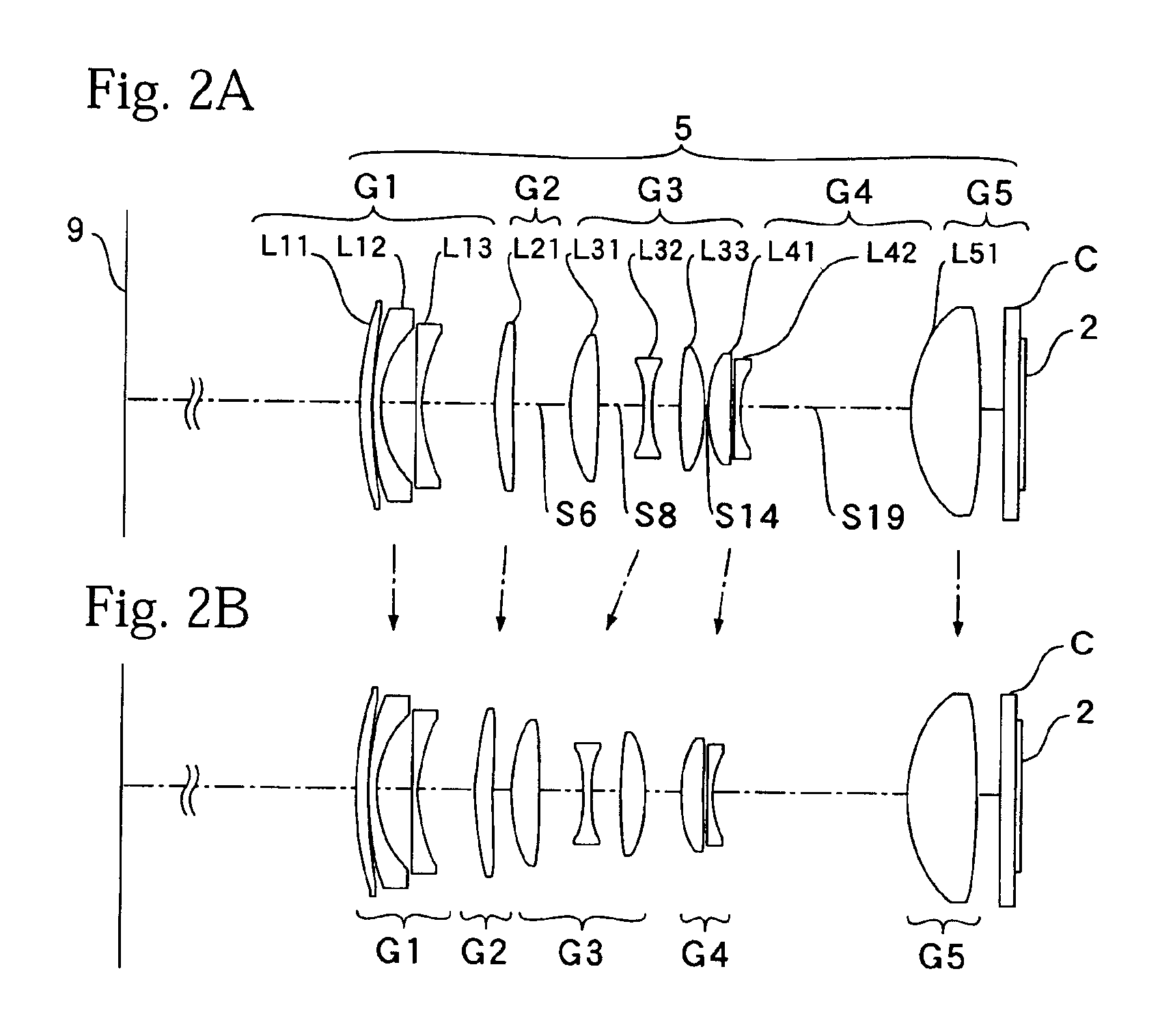Projection zoom lens system and projector
a technology of projection zoom and projector, which is applied in the field of projection zoom lens system, can solve the problems of inability to provide a compact lens system, inability to zoom or variable-power lenses, etc., and achieve the effect of favorable image forming performance and favorable correction of aberrations
- Summary
- Abstract
- Description
- Claims
- Application Information
AI Technical Summary
Benefits of technology
Problems solved by technology
Method used
Image
Examples
first embodiment
The lens arrangement of the projection lens system 5 according to the present invention is shown in FIG. 2 at the wide-angle end (FIG. 2A) and at the telephoto end (FIG. 2B). In the projection lens system 5 of the present embodiment, the lenses are grouped into the five lens groups G1, G2, G3, G4, and G5 on this order from the screen 9 side as described above and are composed of a total of ten lenses numbered L11 to L51. Detailed data on the respective lenses is given later in this specification.
The first lens group G1 on the screen side has an overall negative refractive power and is composed of a positive meniscus lens L11 that is positioned closest to the screen (i.e., at the front) and is convex on the screen side, a negative meniscus lens L12 that is convex on the screen side, and another negative meniscus lens L13 that is convex on the screen side, such lenses being aligned in this order. Also, out of these lenses, both surfaces (the third surface and the fourth surface) of th...
second embodiment
FIGS. 7A and 7B show another embodiment of a projection zoom lens system according to the present invention. The lens system 5 of the present embodiment is also composed of five groups using ten lenses numbered L11 to L51. The refractive powers of the respective lens groups G1 to G5 are the same as the zoom lens described above, and the types of the individual lenses that compose these lens groups G1 to G5 are the same as the lens system described above, apart from the lens L13 of the first lens group G1 that is a double-convex positive lens, the lens L41 of the fourth lens group G4 that is also a double-convex positive lens, and the lens L42 of the fourth lens group G4 that is a double-concave negative lens.
The lens data of the present embodiment is as shown below. It should be noted that in the following embodiment, the various reference codes are the same as in the first embodiment described above, so that description of such has been omitted.
Lens Data (No.2)
No.risinivi168.0983.1...
PUM
 Login to View More
Login to View More Abstract
Description
Claims
Application Information
 Login to View More
Login to View More - R&D
- Intellectual Property
- Life Sciences
- Materials
- Tech Scout
- Unparalleled Data Quality
- Higher Quality Content
- 60% Fewer Hallucinations
Browse by: Latest US Patents, China's latest patents, Technical Efficacy Thesaurus, Application Domain, Technology Topic, Popular Technical Reports.
© 2025 PatSnap. All rights reserved.Legal|Privacy policy|Modern Slavery Act Transparency Statement|Sitemap|About US| Contact US: help@patsnap.com



